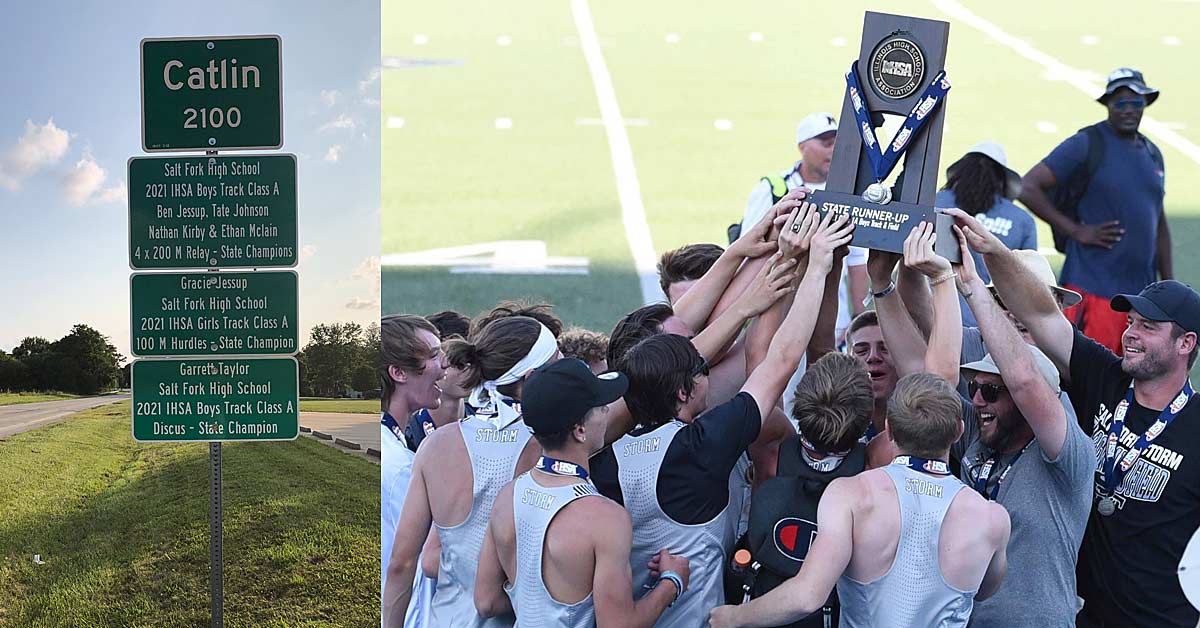You have just become the head track coach at a small school. The school has athletes, but how do you convince them to run track? You have a track, but what do you do when it’s cold? Or raining? Or snowing in March? What do you do with athletes that miss time because they play baseball? Or miss the first several weeks because they play basketball or wrestle? How do you get kids to show up over the summer, when football is the most important sport?
These are some of the dilemmas that small school track and field coaches have to deal with on a yearly basis. Being competitive year after year at a small school can be a challenging and daunting task, but it is absolutely doable. These are tactics that I have found to be the most effective in creating not only a successful track season, but a successful, long-lasting program that produces high level athletes and results on a yearly basis.
Being competitive year after year at a small school can be a challenging and daunting task, but it is absolutely doable, says @SFStormTrack. Share on X
1. Recruit
Ask any coach in a small school and they will tell you there are athletes walking the halls that choose not to do sports—not just track, but anything. While that is most certainly their prerogative, my goal is to get the best athletes in the school on the track team. Find ways to interact with the athletes you want on the team. Stop them in the hallway and strike up a conversation. Talk to their friends on the team and find out what the drawback is relating to track and find a common solution. If they do play another sport, go cheer them on, they’ll notice you there—my family and I went to our first high school soccer game to cheer on one of my athletes, but also to look at a few other potential track members.
Also, for those playing another sport, talk to their coaches. Sell them on the idea of how track can benefit them for their primary sport—other coaches can be your best ally if approached properly. The good part about recruiting for track is you have an entire semester to convince athletes to come out. We are a “Feed the Cats” type program, which utilizes max speed and max rest, which is another great selling point. The main part of recruiting for me is stressing how transferable track and field skills are. The movements that we perform translate to every other sport, making it the perfect way to train in the off-season.
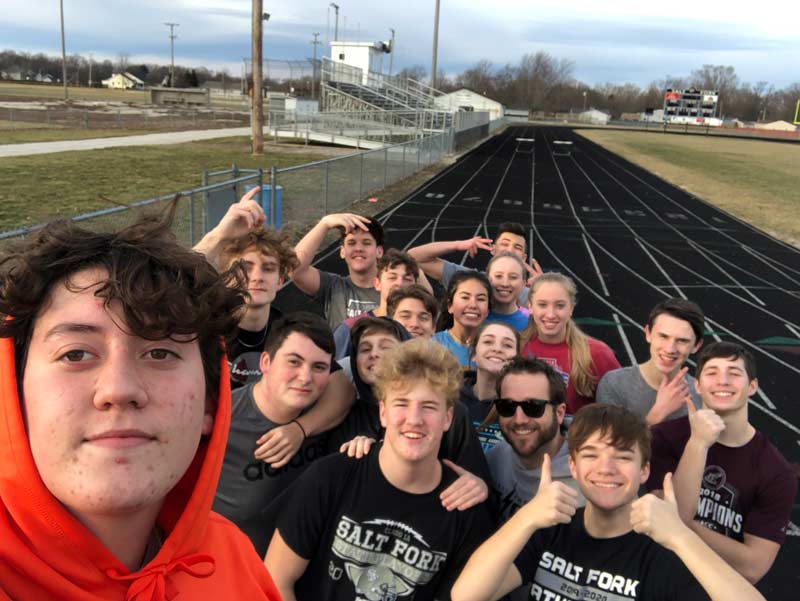
2. Utilize the School Day
Most small schools don’t have a S&C coach or a state-of-the-art weight room. It is important then to utilize what you have during the day. One of our PE teachers, who is our new girls track and field coach, recently started an Advanced PE class. The class is designed for athletes to get workouts in during the day and includes:
- Weight training specific to the season phase they are in.
- Speed workouts.
- Recovery techniques.
- Nutrition.
- Plyometrics.
- Other great things you would see in a good track program.
The benefit of this are three-pronged.
- It saves coaches time. Things that can be done in PE are done in PE, allowing in-season coaches to focus on more sport-specific practice plans as opposed to finding time to incorporate sprinting and lifting. They work on sport-specific lifts in-season, as well as explosive lifts throughout the year. All coaches want fast kids, and this allows our kids to work on and maintain speed throughout the school year, not just during track season.
- Athletes in high school are student-athletes. They have lives outside of school and practice. The same can be said for coaches! The better we can utilize the time they have to be here during the school day, the better.
- Students can find joy in sprinting or maybe discover they are faster than they thought they were and our Advanced PE class can oftentimes work as an extra recruiter.
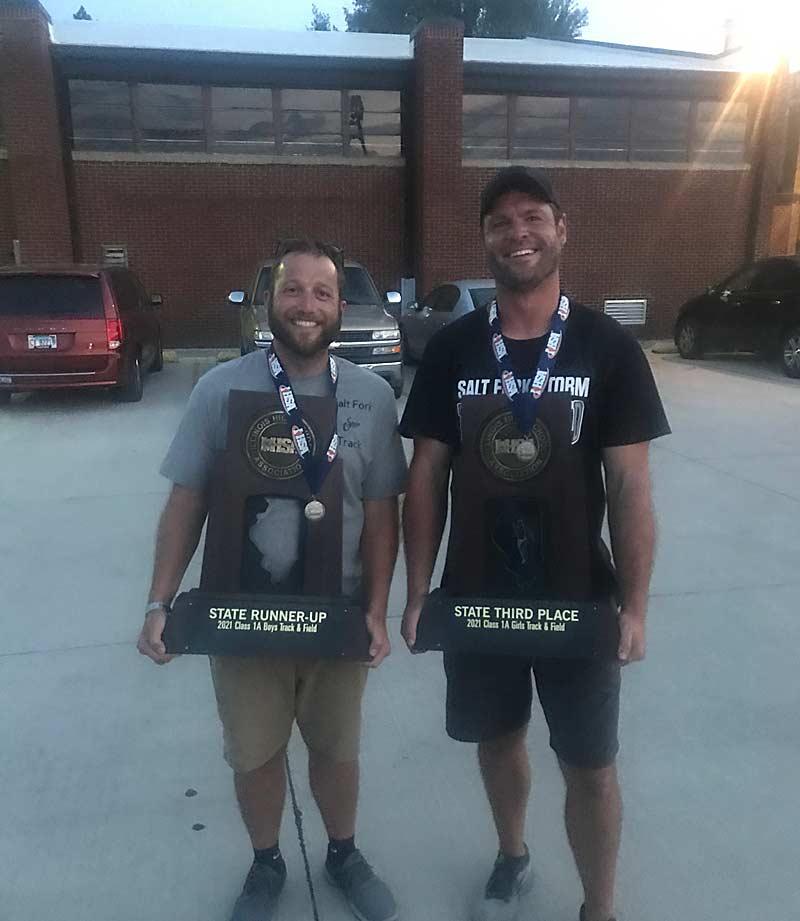
3. Convince Other Coaches
One of the best things that I have done in the past few years is collaborate with the other coaches at our school. I frequently speak with Steve Trompeter, our Girls Track and Field Head Coach, about best practices and how we can get better; however, we both decided we also needed to do a better job of working with coaches outside of our sport.
One of the best things that I have done in the past few years is collaborate with the other coaches at our school, says @SFStormTrack. Share on XFor the last two summers, track, football, and basketball have worked together to create a common schedule over the summer in order to get as many of our athletes as fast and explosive as we can. Two days a week, all through the summer, we sprint. I don’t mean just track kids—I mean football and basketball and soccer and volleyball and anyone else that wants to show up. The track kids bring their spikes, everyone else runs in flats and everyone sprints. Everyone works on form. Everyone jumps. Everyone gets timed. We celebrate PR’s, whether it is a football lineman going under 6 seconds for the first time or the fastest kid on the track team running his new best time.
During the pandemic-delayed football spring season in 2021, the schedule overlapped with track season for a month. Our Advanced PE class didn’t sprint last year because we were on a half-day schedule all year, 25 minute classes. My initial thought was “What am I going to do for a month without a team and how am I going to get this team ready for the season?” The solution? Work together. Football practice started on Mondays and Wednesdays with speed training. We ran 40s on Monday; on Wednesdays, skill-position players ran Fly 10’s and linemen ran 20-yard sprints out of a stance. Problem solved. Everyone benefitted—especially the kids. Oh, by the way, after having most of the football team speed training for the last 5 months, they started their fall season 3-0 with a lot of fast dudes scoring long touchdowns.
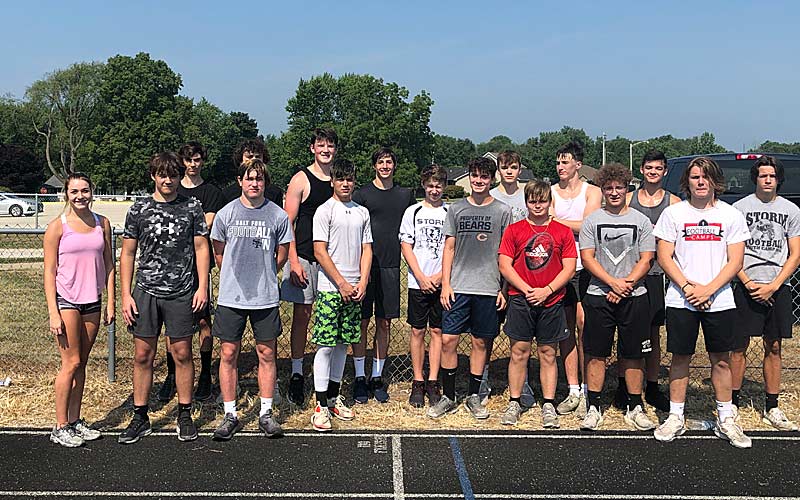
4. Don’t Try to Make Up for Lost Time
During the season, we deal with a lot of adversity. At our school, we have athletes that are dual sport athletes, 3- or 4-sport athletes that come into the season later than others. We deal with weather in central Illinois throughout the winter and spring, and we lack facilities. We are going to use the time we have and not try to move backwards.
At a small school, the number of high level athletes is limited, some years more than others. As coaches, we encourage our athletes to be multi-sport athletes for many reasons: we want our athletes busy in the off-season, they can help recruit from one sport to another, and all of us coaches in the same school are friends and want to help each other out.
Track starts in January, wrestling and basketball end in late February/early March. That’s okay! Give them some rest, let them come in on their own time. Track is a long season and it doesn’t matter so much until May. It’s not about where you start, it’s about where you finish. We also have dual athletics, meaning students are allowed to participate in more than one sport in a season. Again, it helps at a small school to have athletes on your team even if you have to share. In 2019, we won a state title. Three state qualifiers, including our all-state shot and discus thrower, were also on the regional champion baseball team.
It’s not about where you start, it’s about where you finish, says @SFStormTrack. Share on XIn 2021, some of our state-qualified sprinters—both a part of the state 4×200 champion relay team and the state 4×100 runner-up relay team—were also wrestling at the same time! There were times when they missed practice for wrestling meets. Did I try to get them “caught up” in track? No. The reason was rest—it doesn’t help to make them more tired than they already are by catching them up on missed workouts. As Tony Holler often says, “tired is the enemy, not the goal.” Young athletes are resilient and will recover if given the opportunity. I would much rather ease athletes into the season than force workouts on to them that they aren’t prepared for. This can lead to injuries and ultimately derail a promising season.
Another problem that arises in cold weather states (like Illinois) is trying to make up for lost days when the weather is too cold or too snowy or too rainy to do anything outside. As a track coach, you have to be creative. We don’t have a fancy indoor facility. Our high school gym is busy with basketball from right after school until usually 7pm. In the spring, softball gets the gym, not track. We have no hallways in our high school that are conducive to running.
So, what do we do? Find somewhere the kids can jump.
For us, that’s the weight room. We work on explosiveness as much as possible. Find the best area you can possibly find to “sprint.” We walk to our elementary school, which is luckily just a parking lot away—and in there we have the longest hallway we can utilize. It gives us enough space to “sprint” in flats for about 40 yards until we have to slow down to not slam into a wall. Is this ideal to become the fastest versions of ourselves? No, but it’s what we have to work with. Still, we don’t work backwards—if we are forced inside, we do what we can with the day and move on to the next day. We can’t make up for lost days.
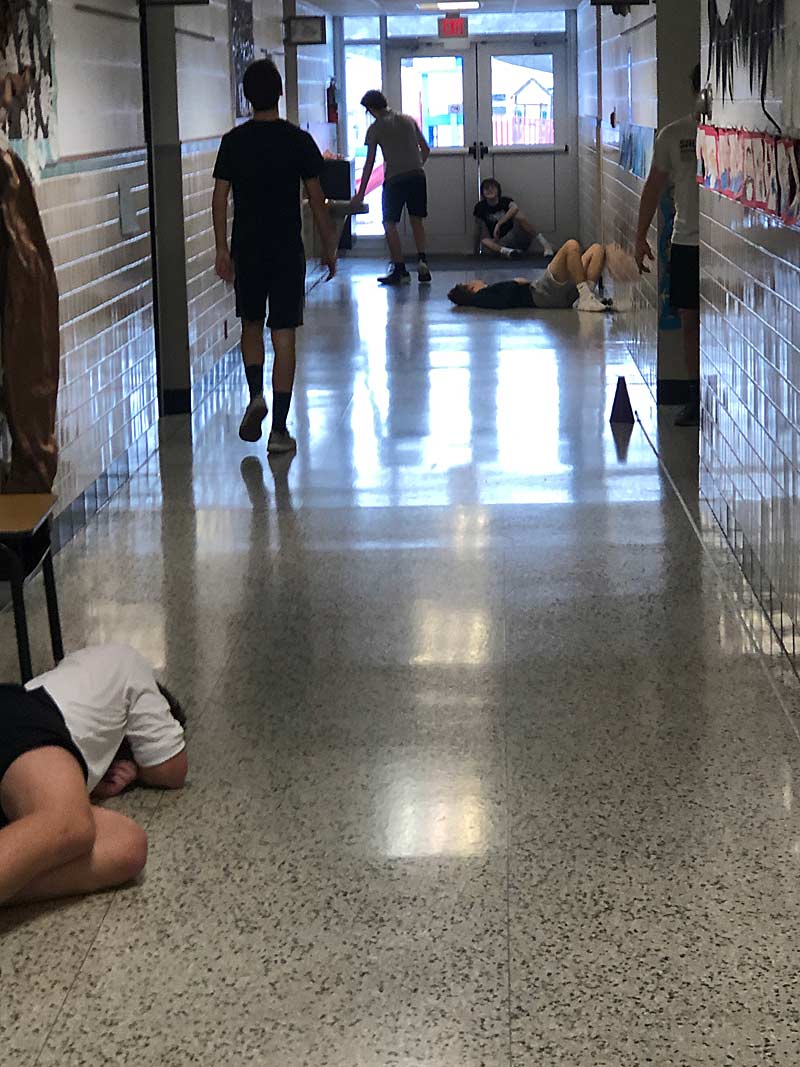
5. Cut Out the Fluff
Anyone with a Twitter account who follows as many track and S&C coaches as possible can quickly be inundated with hundreds of different drills, techniques, and workouts that their promoters claim to be the best. While all may have a purpose, it is important to utilize what works best for YOUR program.
While all drills may have a purpose, it is important to utilize what works best for YOUR program, says @SFStormTrack. Share on XIn my early days as a coach in northern Illinois, I wanted to incorporate as many different ideas as possible into my program. Then I realized that sometimes excessiveness was a detriment: kids weren’t improving like I wanted, kids weren’t enjoying track as much as I wanted. I felt as if I was letting my team down. Once I moved to Catlin and adapted my philosophy, the team started to reap the rewards.
As a Feed the Cats program, I buy into the idea that we sprint, we jump, and we get acidic, but only intermittently. The last 6 teams I have coached at Salt Fork, we have averaged only 19 kids per year. I anticipate about the same amount this upcoming spring season. However, we have high buy-in from the kids that are on the team. They learn the system and they become experts at what they do because speed is important but technique is equally as important.
When teams are willing and able to focus on the little things, big changes can happen. These can be done with relatively little of the “tired factor.” Don’t run over countless hurdles day after day—instead, work on the form, focus on knee drive, arms, posture. Don’t sprint every day—instead, work on form, knee drive, foot position, arms, starts, posture. Don’t jump every day—instead work on take off angles, stride pattern, jump form, landing position.
When teams are willing and able to focus on the little things, big changes can happen, says @SFStormTrack. Share on XAll of these can be done with simple drills that may seem repetitive to athletes at times, but when taught properly can yield huge gains. This method has resulted in 47% of our team making it to the Illinois state track meet over the last four seasons. Not only that, but of the 60 events we have competed in, at the last four sectional meets, we have qualified in 35 of them (or 58% of events). Cutting out the fluff isn’t just for sprinters—it is for all events to promote high level mastery of technique while incorporating as much rest and recovery as possible to reduce the chances of injury.
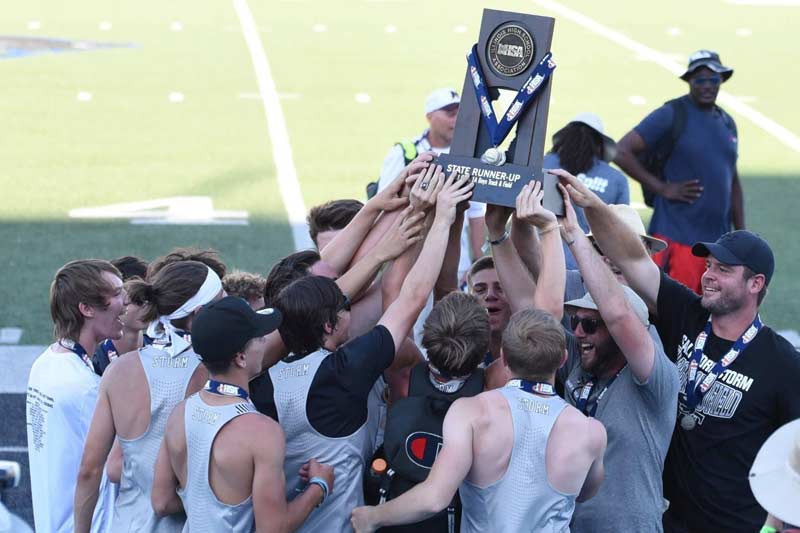
Communication Breeds Success
Being a small school track and field coach can be extremely frustrating at times, without the same facilities, money, and numbers as schools that have larger classes than we have kids in our district. However, when done right, it can be extremely rewarding and fulfilling.
In my years of coaching track, I have found that there is no right way to run a program. I know and talk to other successful track coaches from small schools that operate similarly to us, and also others that operate totally different. The common denominator in all of these key attributes of our program is communication.
Without communication, we would have never collaborated as coaches to design a PE class for our athletes or set up a summer program that benefits all of our athletes. Without communication, we wouldn’t be able to share athletes properly throughout the school year or within the same season in a way that avoids injury. Without communication, it would be difficult to find space to utilize throughout the season. Without communication with our student-athletes, it would be impossible to recruit new members to the team or to be up to date on their recovery during the season. And when small schools put it all together, they aren’t just small school fast, they are CHAMPIONSHIP FAST.

